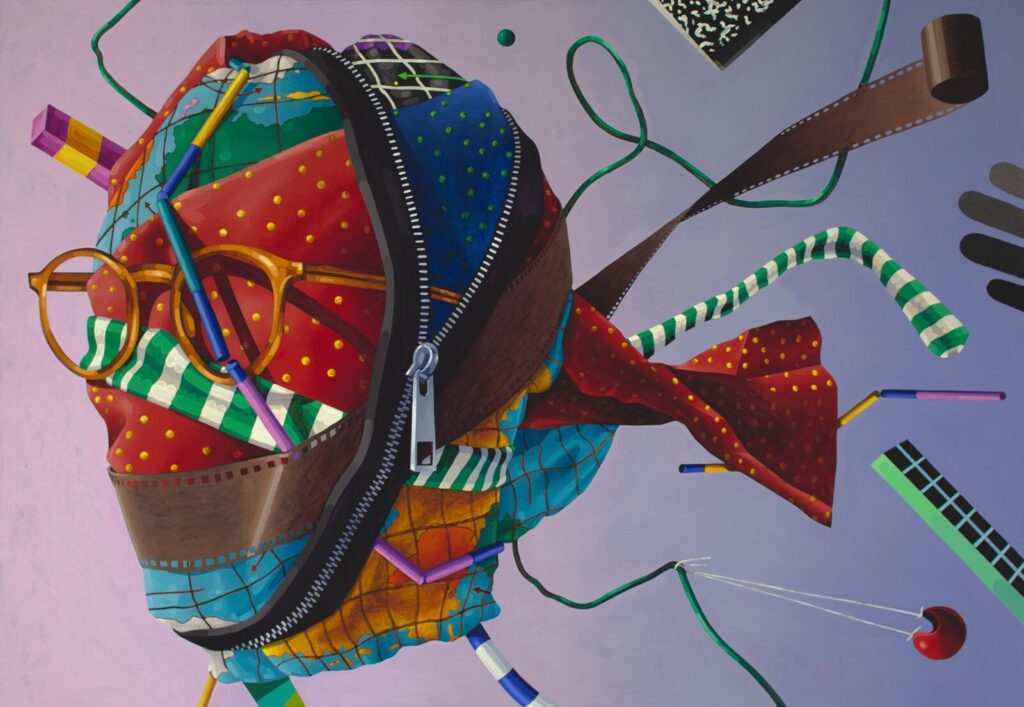One of the showcase pieces in KMAC Museum’s inaugural triennial survey of contemporary art in Kentucky (up through December 1, 2019) is a trio of sumptuous, pretty, scary paintings by Vian Sora, an artist currently living and working in Louisville, and originally from Baghdad, Iraq. According to the wall-text, in the three paintings Sora “employs expressive painterly abstraction as a means to convey the emotional and psychological trauma brought on by her time living in and fleeing from her home in war-torn Baghdad.â€
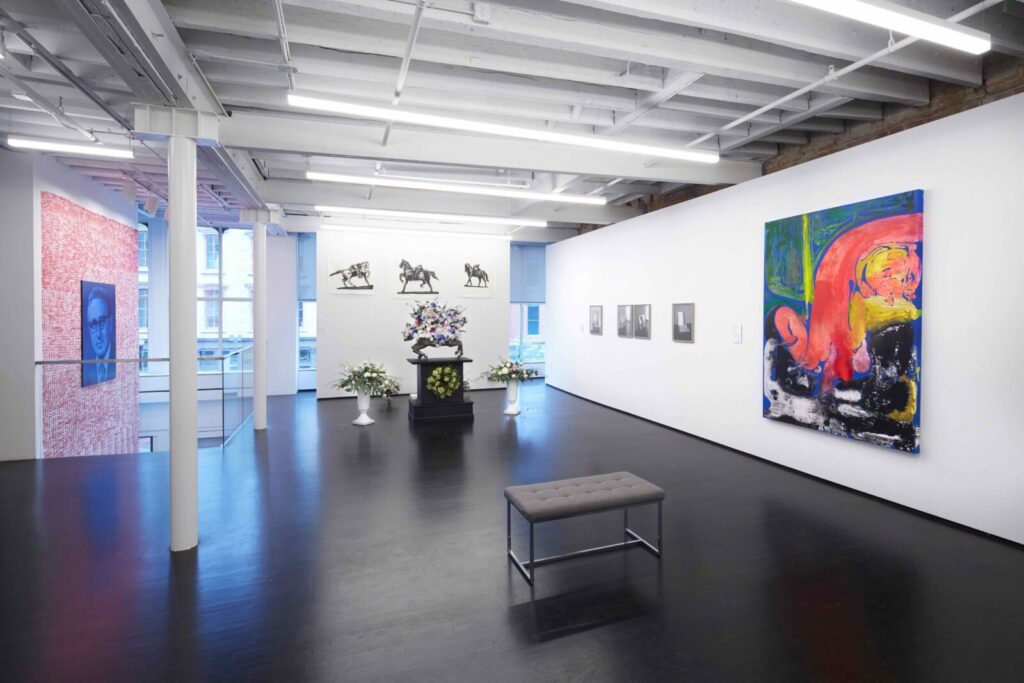
All that’s true, I’m sure, but witnessing the gorgeousness of the three paintings on site is an altogether aesthetic experience, not exactly free from trauma, but stubbornly transcendent, referencing what art can do when it’s not tethered to actuality, even though it is made in response to what has actually happened.
The wall-text helps you navigate the reasons why Sora has created what’s on the wall, but it can’t explain the moment when you first see Sora’s work and have your own thoughts woven into its blasts of color and form, its Matisse-on-fire urgency and just plain corrosive prettiness. The meaning, in other words, is a negotiation outside of biography and intention: it’s the meeting of memories and ghosts on both sides, the viewed and viewer.
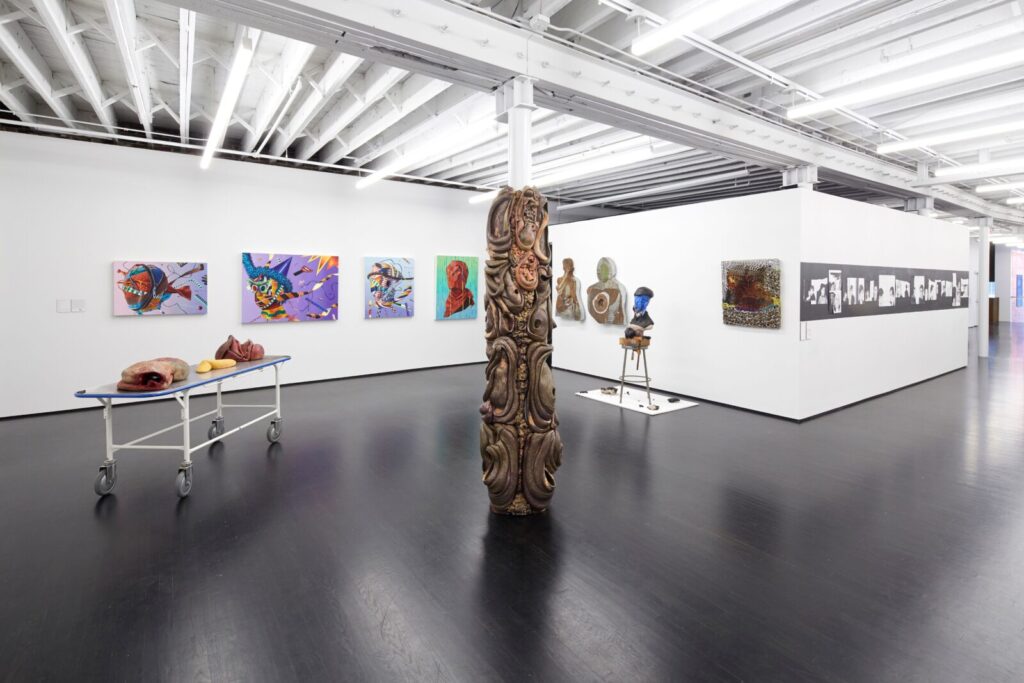
To me, that’s what makes visual art so necessary now in a world where every cultural idea/pose/construct/narrative seems to be explained ad nauseum, thanks to social-media posts and pundits, the saturation of explanation becoming the way we not only take in but respond to “the world around us,†even our own biographies and struggles. Visual art, like Sora’s paintings, need to exist outside of information for them to truly register, to foment meaning beyond intention, that moment when you as the viewer see what’s been made, disconnected from root causes, and make the match in your own head.
The wall-text, in other words, just becomes gravy, biography a beautiful afterglow.
“Nothing exists until or unless it is observed. An artist is making something exist by observing it. And his/her hope for other people is that they will also make it exist by observing it. I call it ‘creative observation.’ Creative viewing,†William Burroughs wrote.
I’ve been reading Burroughs’ fiction and non-fiction lately, as his teeming, satirical, scatological takedowns of addiction and language and America all speak directly to our current times. He was vitally interested in how all forms of art try to get at experience while also dislocating it, finding meaning outside of actualities, so that what we see and read and hear blur reality to the point of it escaping and learning from the escape.
What Burroughs seems to be pointing out in the above quote is that merger of making and observing, creating and taking, an ongoing metaphorical and ontological pollination that gives art its main function, to uncover routes of escape, that impulse to make meaning once the art is outside of the artist’s control, even the artist’s resolve.
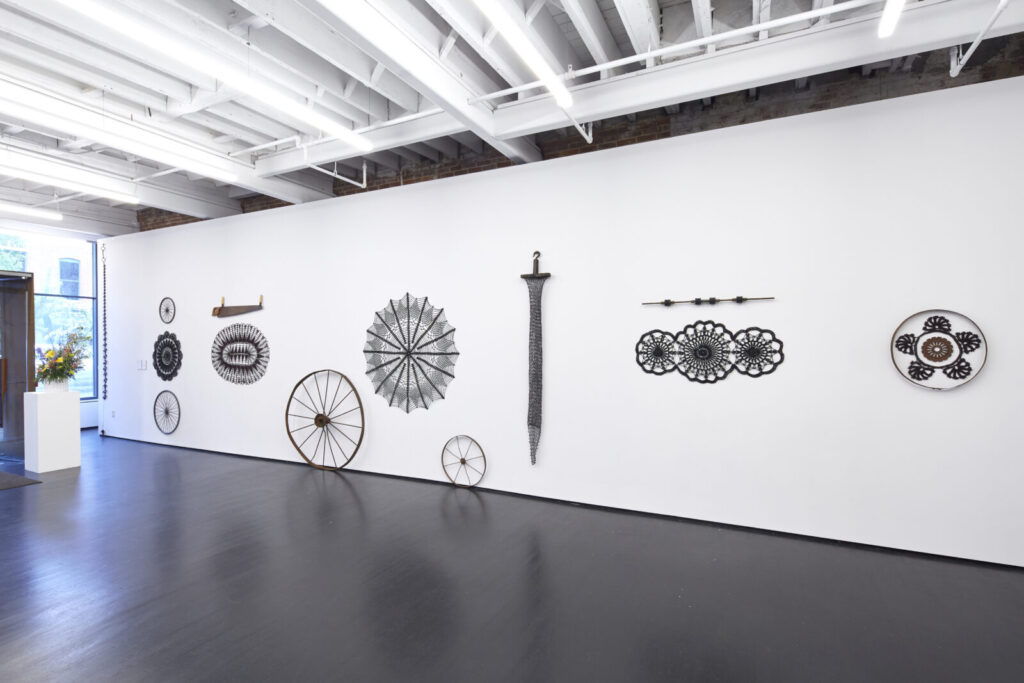
“Pollination†is at the center of KMAC Museum’s triennial, subtitled “Crown of Rays,†according to more wall-text introducing the whole gig: “In 1926, Kentucky lawmakers adopted the Goldenrod as the official state flower. From meadows and prairies to polluted city environments, it flourishes, heartily, among wide ranging conditions and soil types.†It turns out “the Crown of Rays is one of over a hundred cultivated plants within the Goldenrod genus, distinctive for its spears of clustered tiny yellow flowers that jut out like sunrays and that recall the halos of saintly iconography.â€
“Iconography†is at the core of another triennial artist’s work, in direct contrast to Sora’s abstract-expressionist forms. Jimmy Angelina pulls out cinematic images and poses and places them outside of themselves in a series of itchy, R.Crumb-like drawings all done in black ink and installed horizontally on a banner of black paint. The fractured dramatic moments Angelina depicts erase the meaning of their origins, and transform into a parade of ghosts without progenitors, floating through space like celluloid in search of a projector.
Lori Larusso’s wall-haiku, “A Pastiche of Good Intentions,†is an amazing assortment of food and other iconographies stolen from billboards and magazines and other media. The materials she uses (ribbons and flat acrylics on polymetal panels) lend the whole piece hilarious authenticity while also providing sweet little moments of total smart-ass side-eye. It’s a tour-de-force of meaninglessness finding meaning, kind of like an e. e. cummings poem turned into a Barney’s window display.
Kristin Richard’s installation right across the way from Larusso’s piece, titled “gentle platinum antibacterial essential botanical escapes†is made up of Dawn dish soap, water, glass, laminate, wood, lighting, and form, and pushes forward a sort of laboratory elaboration on the strangeness of what is already there, always there: cabinets, Mason jars, Formica, shelves, all crystallized into a sci-fi moment, an altarpiece to boredom churning into worship. The colors of cleansers become the aesthetic impulse that pulls us through. You can attach all kinds of meanings to Richard’s gorgeous constellation, but at the end of the day it all seems to be orbiting Burroughs’ idea of existence created by observation. Taking banality and transforming it into otherness by simply displaying it outside of its purpose and premise.
John Harlan Norris’ series of phosphorescent portraits (done in oil, acrylic and sometimes sand on canvas) take banality and dance it into surrealism, abandoning seriousness in favor of play and ingenuity and punchlines that don’t have jokes to go with them. They are basically pictures of ghosts made up of fashion fragments and plastic doodads, all completed in those cold glow-in-the-dark colors that encapsulate pop-culture and pop-art memories of the early 1980s. Each painting is a fever-dream album-cover for synth-pop masterpieces that never got made, and yet still linger in the collective unconscious. “I want my MTV†becomes beautiful oblivion.
Another sort of playfulness, completely serious, comes to fruition in Harry Sanchez, Jr.’s two portraits, both acrylic on Styrofoam, from a series of prints in which he appropriates media images of deported immigrants. The images are distorted somehow into clarity and create meaning without being embedded in it. Sanchez chisels those pictures into Styrofoam, pulling mundane portraiture into a game of insight and integrity. His work in the show provides a witty moment of silence, while also forming the best kind of protest: saying something very clearly without contributing to the overall noise.
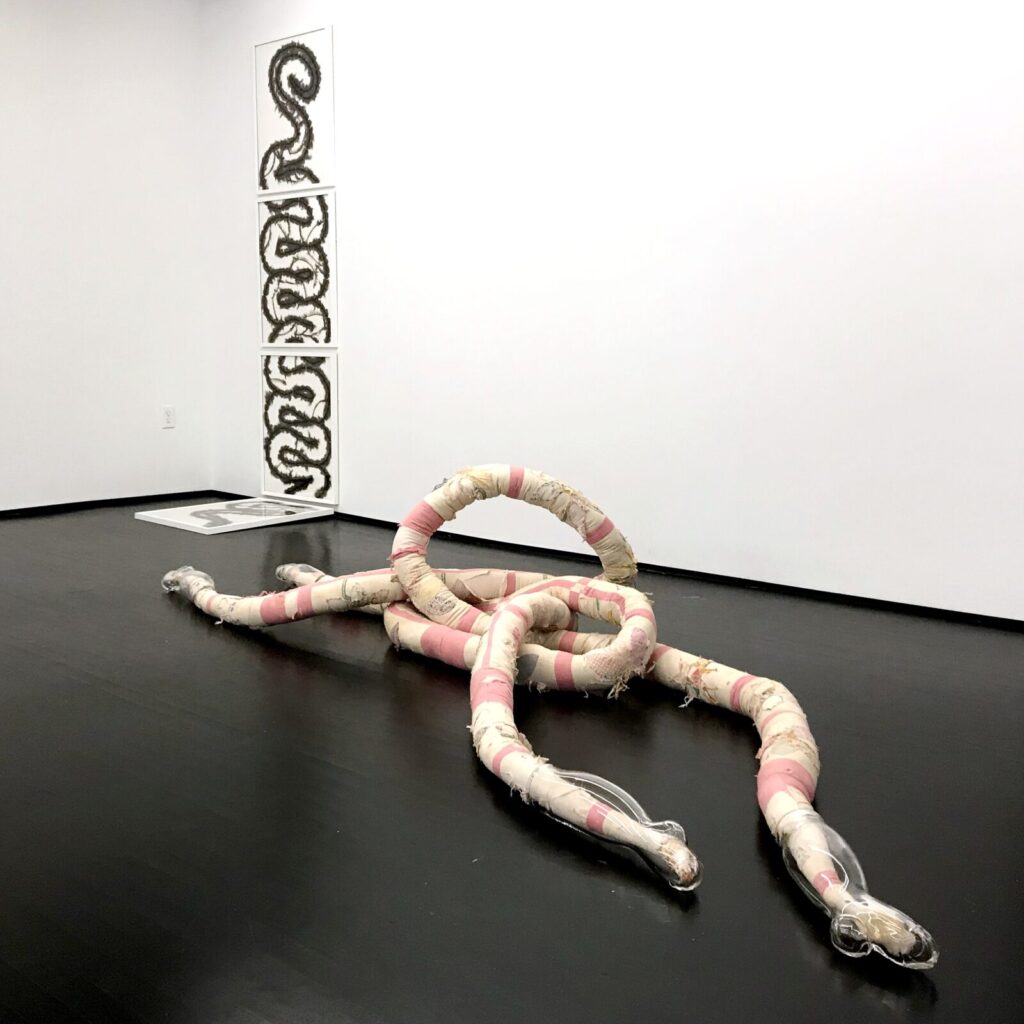
Two snakes intertwined in the middle of the second floor is what I want to end with. Melissa Vandenberg’s “Shed†is a sculpture produced from an old stuffed quilt with what look like glass booties on each end. Snakes of course are so symbolic they almost short-circuit their own symbolism; they can signify associations with all kinds of institutions, religions, nations, myths. What Vandenberg’s piece gets at is a moment of poetry outside of all that chuffah: the symbol is the thing, and the thing is almost terrifying enough to make you want to retreat into symbol. However, the piece has an inherent innocence about it, a Holly-Hobbie texture and context that slides the intertwined reptiles into glassmuzzle dream.
“Dream†is a loaded word and term of course. Historically visual art has often retreated into “dream†during turbulent and insane times, but many of the artists in KMAC Museum’s first triennial take the concept of “dream†and find a way to both comment on and satirize how “meaning†in our meaning-saturated times can sometimes become a way out of literalness and into something entirely outside of a news-feed.
TOPMOST IMAGE: Installation view, KMAC Triennial. Work by Philis Alvic in the foreground.

